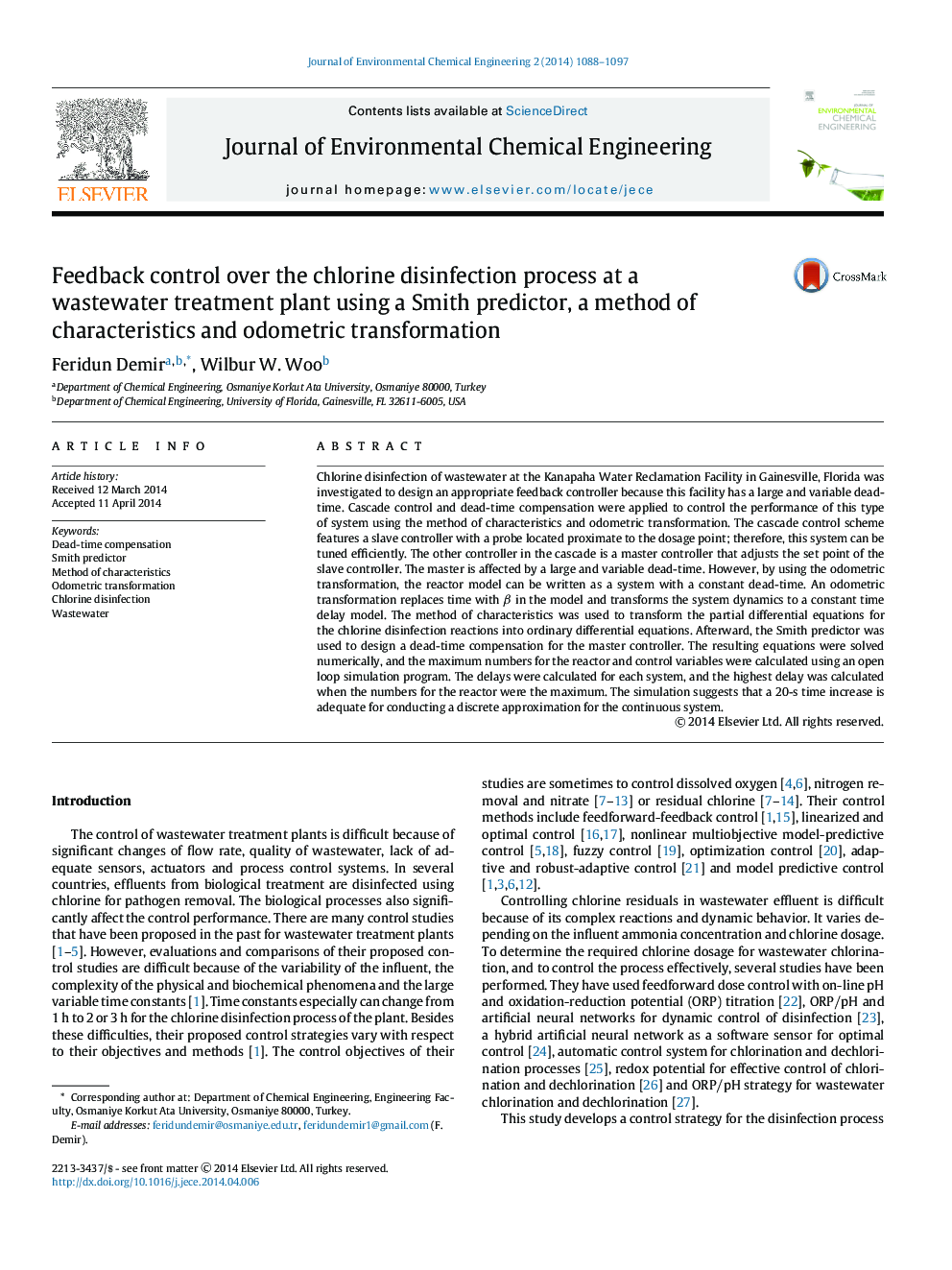| کد مقاله | کد نشریه | سال انتشار | مقاله انگلیسی | نسخه تمام متن |
|---|---|---|---|---|
| 221773 | 464265 | 2014 | 10 صفحه PDF | دانلود رایگان |
• Cascade control and dead-time compensation provided a good control performance.
• Method of characteristics was applied to the PDEs of chlorine disinfection.
• Odometric transformation was applied to obtain a constant delay model.
• Smith predictor was used to design an effective feedback controller.
Chlorine disinfection of wastewater at the Kanapaha Water Reclamation Facility in Gainesville, Florida was investigated to design an appropriate feedback controller because this facility has a large and variable dead-time. Cascade control and dead-time compensation were applied to control the performance of this type of system using the method of characteristics and odometric transformation. The cascade control scheme features a slave controller with a probe located proximate to the dosage point; therefore, this system can be tuned efficiently. The other controller in the cascade is a master controller that adjusts the set point of the slave controller. The master is affected by a large and variable dead-time. However, by using the odometric transformation, the reactor model can be written as a system with a constant dead-time. An odometric transformation replaces time with β in the model and transforms the system dynamics to a constant time delay model. The method of characteristics was used to transform the partial differential equations for the chlorine disinfection reactions into ordinary differential equations. Afterward, the Smith predictor was used to design a dead-time compensation for the master controller. The resulting equations were solved numerically, and the maximum numbers for the reactor and control variables were calculated using an open loop simulation program. The delays were calculated for each system, and the highest delay was calculated when the numbers for the reactor were the maximum. The simulation suggests that a 20-s time increase is adequate for conducting a discrete approximation for the continuous system.
Journal: Journal of Environmental Chemical Engineering - Volume 2, Issue 2, June 2014, Pages 1088–1097
